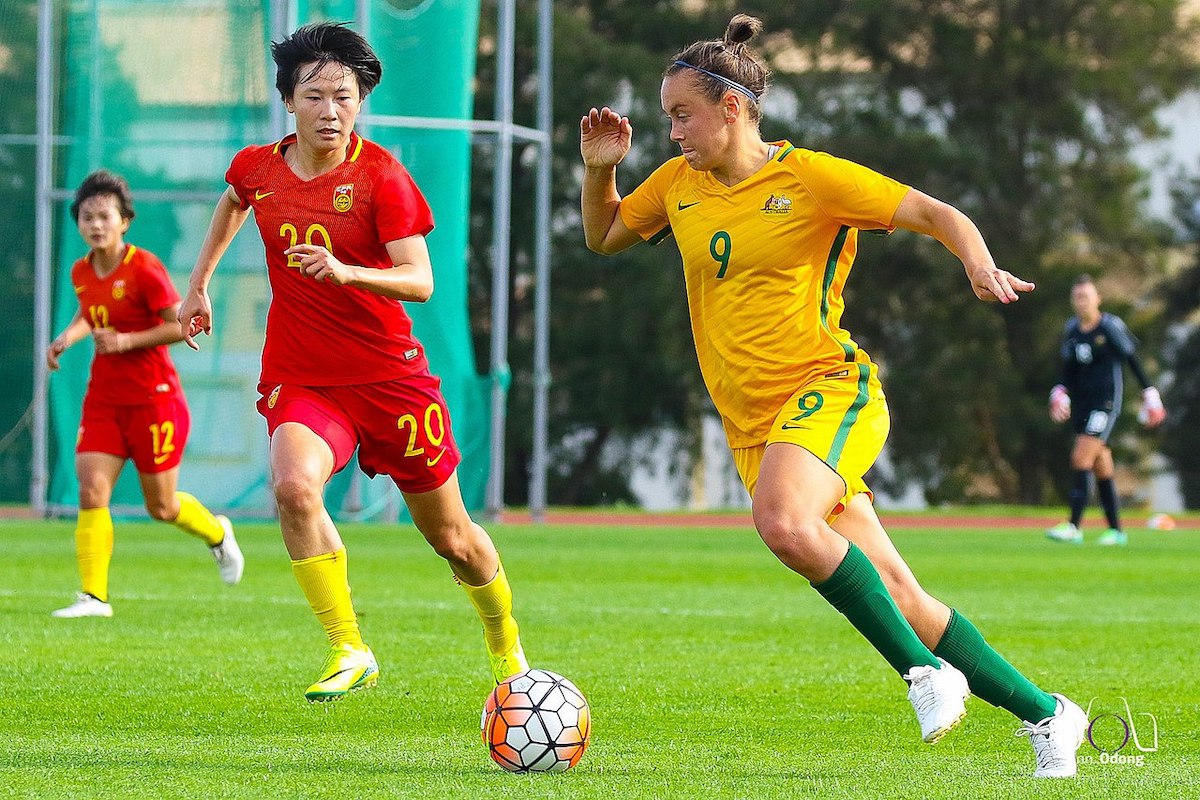Top Stories
Equal Pay for Unequal Work—A Symptom of Prosperity
The Matildas’ landmark deal may actually prove counterproductive for the pay gap movement.

On Monday, 4 November 2019, Australian media outlets announced a historic deal brokered between the Football Federation of Australia (FFA) and the Professional Footballers Association after a year of negotiations. This new arrangement will see the Matildas (the Australian women’s soccer team) and the Socceroos (the Australian men’s soccer team) evenly splitting the sport’s commercial revenue, rather than each team receiving a cut of their own generated revenue. This follows a number of other nations arranging similar collective bargaining agreements.
This change has been described as a major win for women’s sport, but detractors have been quick to point out some logical and ethical inconsistencies. Chief among these is the Matildas’ highly publicised 7-0 loss to a team of teenage boys from Newcastle in 2016 which raised questions about the standards of Australian women’s soccer. At that time, goalkeepers Melissa Barbieri and Mark Bosnich engaged in an online exchange, during which Barbieri argued it was not the intention of female soccer players to be paid the same as their male counterparts.
facts continued: we don't want to be paid the same as socceroos. We want to be paid so we can live & breath football.
— Melissa Barbieri OLY (@Bubs_11) May 26, 2016
This debate is an addition to the growing list of global gender-based sporting controversies that span decades. In 1973, retired 55-year-old self-styled tennis hustler, Bobby Riggs lost to Billie Jean King in a match dubbed the “Battle of the Sexes”—the subject of a 2017 feature film of the same name. 44 years later, outspoken former tennis champion John McEnroe attracted criticism for disputing that Serena Williams was the world’s greatest tennis player. Speaking to multiple outlets, McEnroe suggested that Williams would be ranked 700 on the men’s circuit. In recent years, gender issues have been complicated further by an array of transgender controversies in sports such as Australian football, martial arts, and teenage wrestling. There have also been persistent attempts to exclude Caster Semenya from women’s athletics for having high levels of naturally produced testosterone.
The issue of gender in sport brings an acknowledgement that transgender women and men have a physical advantage over women into conflict with a doctrine stipulating that there are no meaningful differences between the sexes. But this has in turn created confusion over the issue of sporting ability. That teenage boys can soundly defeat the Matildas or that a male tennis player ranked in the 600s might defeat Serena Williams does not necessarily reflect a disparity in technical skill. Rather, it reflects a disparity in attributes such as speed, height, and physical strength which combine to produce an advantage so overwhelming it precludes the possibility of fair competition.
Segregation in sport, therefore, is not limited to gender. Contact sports such as boxing or martial arts also divide participants by weight class, not only to ensure fair competition but also to protect the safety of competitors. Remuneration then is a matter of how much revenue they are able to individually generate. However, critics of the deal to split Australia’s soccer revenue have pointed out that there is a considerable disparity in revenues generated by the two teams, implying a significant portion of the Socceroos-generated revenue will now be redistributed to Matildas players. During the women’s world cup in 2019, the Fédération Internationale de Football Association (FIFA) was found to be exaggerating ticket sales and sold-out matches when stadiums were plagued by empty seats.
So, it seems that a team attracting lower revenue for the sport is also now being paid the same as a team which attracts more customers. And if pay parity between the Matildas and Socceroos is simply based on the fact that each team is representing the country in their respective competitions, then surely it follows that youth teams and Paralympic teams deserve pay parity as well. If pre-existing disparities in pay between men and women are said to be caused by sexism, then, by the same logic, the comparatively small percentage of team budgets currently set aside for youth and Paralympic teams would be evidence of ageism and ableism, respectively.

The Matildas’ landmark deal may actually prove counterproductive for the pay gap movement. Sporting controversies like those discussed above only serve to highlight differences between the sexes and raise questions about the conflation of equality and sameness in other areas. This could muddy the waters on equal pay disputes in more conventional workplaces where individual differences in pay entitlement aren’t as obvious to outsiders. As is the case in many parts of the world, leading Australian figures have continually misrepresented wage gap statistics which only further fuels suspicion. One such example is former federal politician, Kerryn Phelps who spoke out regularly about the gender pay gap and level of male representation in executive roles. Paradoxically, the 2016 national census indicated that two-thirds of those working more than 49 hours per week in her own electorate were male.
Similarly, in a 2018 statement to parliament on the issue of gender-based discrimination in the workplace, career Labor politician Tanya Plibersek said, “It makes no sense to me that a person with a Certificate III in Early Childhood Education earns 20-something bucks an hour and someone with a Certificate III in Metal Work earns 40-something bucks an hour. There is no way that is anything other than gender-based discrimination.”
A person with a Certificate 3 in Early Childhood Education (where about 98% of workers are women) earns around $20/hour when someone with a Certificate 3 in Metal Work earns around $40/hour. That is gender-based discrimination.
— Tanya Plibersek (@tanya_plibersek) September 10, 2018
@UnitedVoiceECEC @UnitedVoiceOz pic.twitter.com/lqEFZbjvOy
Some may perceive an unhealthy balance in the pay of these two professions. But it is important to look at the detail. There is no such thing as a Certificate III in “Metal Work” in Australia. However, there is a Certificate III in Engineering (Fabrication Trade). This qualification takes approximately four years to complete, accompanied by a low-paid apprenticeship. The Certificate III in Early Childhood Education and Care, on the other hand, typically takes 12 months to complete, with other providers offering the program in as little as three months. Comparing graduates of these two programs is as unhelpful as comparing, say, graduates of bachelor degrees in arts and medicine. And that’s before various other factors are taken into account (discussed at length by public intellectuals such as Jordan Peterson). There is also no evidence of unequal pay between sexes within each of those disciplines but considerable evidence of discrimination against males in childcare.
Some people, regardless of political persuasion, recognise unique challenges females face in both the workplace and broader society. It is therefore puzzling to observe a growing list of questionable arguments which serve to reverse the progress made in the volatile realm of gender equality. Murray’s suggestion that society is increasingly suffering from Ken Minogue’s St George in retirement syndrome appears to be the best explanation for this phenomenon. Rather than being stimulated by factors like the slow death of god or a global financial crisis, perhaps our unprecedented and widespread prosperity have made us the victims of our own success and privilege.
Take, for instance, the changing nature of work over the past century from dangerous occupations in primary production and heavy industry to the sedentary knowledge economy. Despite arguments made by Generations Y and Z, we are generally more privileged than our grandparents. In fact, one of Generation Y’s most pressing concerns is how to fund our record-length retirements without bankrupting society. This is a far cry from the likelihood of dying on a worksite or battlefield before your 30th birthday, and makes it more difficult to accurately understand the nuances of historic inequality in the workplace.
Our unprecedented levels of prosperity offer us the privilege of devoting resources to fixing problems we perceive in the world, whether they be real or perceived. The World Bank and other sources have observed the correlation between prosperity and activism in the environmental movement. In effect, a starving family doesn’t have time to think about their impact on the environment, let alone campaign to ban plastic straws. A starving society doesn’t have the time to ascertain if there is an equal number of males and females both accumulating resources and rearing children.
There is a possible solution to at least resolving the artificial economy of sex in sport and reorienting it toward both merit and equality—marketability. Women’s sports may struggle to reach the same physical calibre as men’s sports, but they can be more entertaining than men’s sports and attract proportionate revenue. Some fans of mixed martial arts argue that women’s competitions are more entertaining than men’s because they focus more heavily on technique than brute strength. Some fans of soccer argue that women are less likely to take dives. Virtues apparent in particular women’s sports could be the key to approaching, matching, and even overtaking their male equivalents in some cases. It is then incumbent on male athletes to remain competitive for audience attention by improving the marketability of their own competitions.






